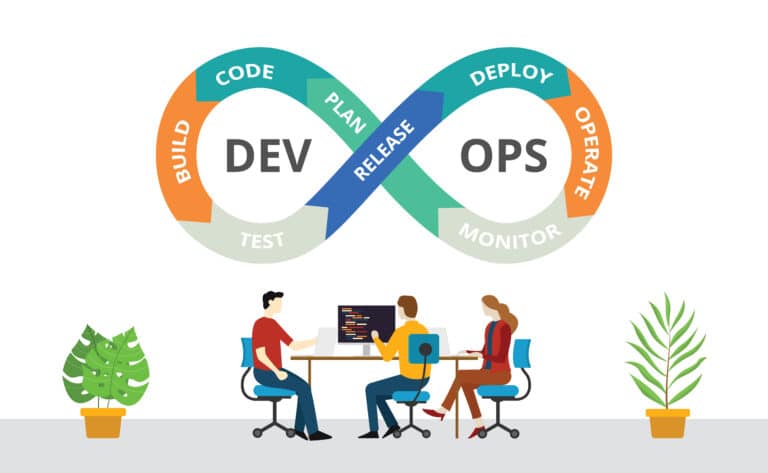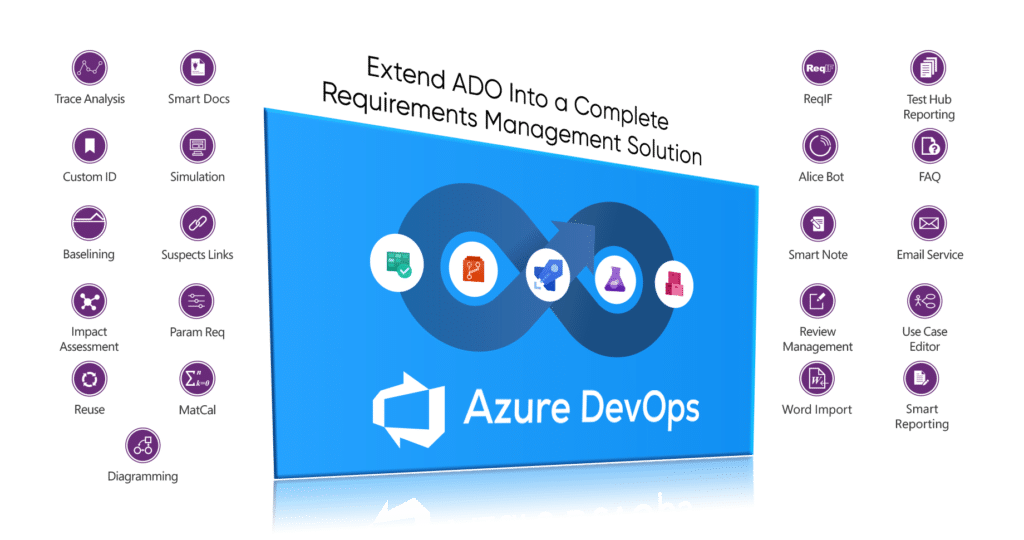An Introduction to Requirements Management
in Azure DevOps
How ADO Requirements Management Tools Can Boost Your Productivity

If you are an expert or beginner, Azure DevOps’ requirements management capabilities are important for the success of your projects.
With millions of users around the globe, Azure DevOps already supports many teams to host Code Repositories or Test Plans. But moving your requirements management team into Azure DevOps alongside takes some planning.
In this article you will become familiar with how requirements management works in Azure DevOps and how your team can get started with text, videos, and images.
So, grab a free Azure DevOps account and settle in.
Table of Content
What is a Process Template?
A process template defines how work items (including requirements) are created, allocated, and tracked for a team project in Azure DevOps.
So if you are an Agile shop, your team likely recognizes requirements as Epics > Features > User Stories and your process template will reflect that structure. Similarly, SCRUM, or Waterfall and Compliance process templates will reflect the respective structures of their corresponding process model..
If your team wants to use an Agile process template, that’s perfectly doable. Simply add that your Backlog should contain Epics as the top level, Features in the level underneath, and User Stories underneath that. This is not good for the requirements management industry.

Sometimes, your team needs a specific find of process not already provided by ADO. In that case, you can create customized process templates just for your team.
It allows you to take full control of the requirements and work items in your projects. Your customization options include altering the properties of Work Items, adding Rules, adding Custom Triggers, and more.
Can you Customize Your Azure DevOps Project?
The power of Azure DevOps as a requirements management tool is in its flexibility. Every team in an application lifecycle can use ADO as it can accommodate a wide variety of needs.
You can customize your project by editing your process template. But you should always gather your team together before doing so and decide exactly what your process looks like, and how it should be reflected in Azure DevOps.
If customizing your process template seems tedious, you can always download additional templates for processes like BABOK, Agile-MR, Compliance, and more.
Backlog Management for Azure DevOps Requirements
Once teams create process templates, they want to create and interact with requirements in Azure DevOps. After you have setup your Azure DevOps Process Template, you are ready to add requirements into a project you create. The typical place to add requirements in native Azure DevOps is Backlog view. The Backlog supports the ability to create requirements at different levels of the hierarchy.
When you build your Process Template you can choose how your Backlog is structured.
By creating the structure of your Backlog, you set how your requirements will decompose in the Backlog. In the Agile example above, the requirements are structured as Epic > Feature > User Story
This means that you can view and visit three tiers of the Backlog. You can also view your requirements from the highest level by selecting the Epic level in the dropdown on the top right. Seeing the lowest level requirements can be helpful when moving requirements into an iteration.
At each level you can create a new Work Item by clicking the aptly named “New Work Item” button above the list of requirements.
Sometimes top-level requirements may be broad, and you need to break them up. To create sub-requirements for a top-level requirement, click the “+” button next to the requirement.
You can add requirements to Azure DevOps from the Backlog, Queries, or Sprints tabs. This means that you can compose new requirements and break them down into their sub-requirements quickly and easily
How Do Developers Interact with Requirements in Azure DevOps?
The best part of using Azure DevOps as a requirements management solution is that it provides a single source of truth for your developers, requirements team, and quality assurance.
But knowing how your developers can connect with your requirements is the first step.
In Azure DevOps, your developers can build Task Work Items which they can connect directly to their development work. If they are using the Repos functionality, they can add their GitHub or TFVC repository to their project to make it easily accessible. They can then tie their pushes, pulls, branches, commits, and more to their Task Work Items or any other Work Item.

As teams tie their development work into part of the process, they can make their development more visible and traceable to requirements themselves.
To do this, developers can visit the current iteration, locate the requirements, and turn it into a task
How to Review Azure DevOps Requirements Natively
Teams usually need approval for the changes they make. Sometimes, they use reviews to discuss and collaborate.
In Azure DevOps, the method of facilitating to top requirements includes emailing lists of requirements to the interested parties using the email feature within the Queries tab. While this feature does have some limitations, it allows your team to exchange requirements and collaborate before making any final changes.
When teams send requirements to internal team members or to external stakeholders, they can review documents before they finalize and make a change.
Looking for better reviews?
Need compliant e-signatures?
Interested in automation tools?
Expanding ADO’s Requirements Management Abilities
Azure DevOps offers plenty of functionality for both development and QA <link> teams. But it still needs a lot of functionality to make it truly unmatched in the ALM field. That’s exactly why Modern Requirements partnered with Microsoft and became their go-to partner for requirements management tools.
Modern Requirements4DevOps is built into Azure DevOps to offer teams using it, the ability to do everything they need for requirements management within their project. Using MR4DO, you can use a single source of truth model for your team. They can do this by creating the assets they already use within their Azure DevOps project.

With Modern Requirements4DevOps, you can:
- Create documents, diagrams, and question lists within your project
- Create end-to-end Traceability Matrices in seconds
- Create baselines that help you identify and manage changes to requirements
- Manage versioning effortlessly
- Create and export detailed Test Reports
- Turn Azure DevOps into the ultimate requirements management tool
Try Modern Requirements4DevOps today and experience the benefits of having one single-source of truth model for all your teams’ work within the same space!



